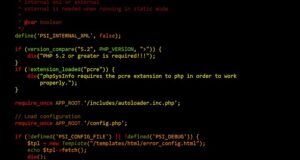Table of Contents
Can You Write React Without JSX?
React is a popular JavaScript library used for building user interfaces. It is often used with JSX, a syntax extension that allows developers to write HTML-like code within JavaScript. This combination of React and JSX makes it easier to create complex user interfaces quickly. But is it possible to write React without JSX?
The short answer is yes, but there are some important considerations to keep in mind. JSX makes it easier to write React, but it is not a requirement. To write React without JSX, developers need to use React.createElement() to create elements and then pass those elements to the ReactDOM.render() to mount them onto the page.
In this article, we will discuss what JSX is, the benefits of using it, and how to write React without it.
What is JSX?
JSX stands for JavaScript XML and is an extension of JavaScript that allows developers to write HTML-like code within JavaScript. It was created by the team at Facebook and is often used with React to create complex user interfaces quickly. It is not a requirement for writing React, but it does make it easier.
The Benefits of Using JSX
JSX provides many benefits for developers who use it. It makes it easier to write React code, as it allows developers to use familiar HTML-like syntax. It also makes it easier to read, as it is much more concise than writing React code without it. It also allows developers to use variables and functions in the same way they would in plain JavaScript. Finally, JSX can make debugging easier, as it makes it easier to spot errors in the code.
How to Write React Without JSX
Although JSX is not a requirement for writing React, it does make it easier. To write React without JSX, developers need to use React.createElement() to create elements and then pass those elements to the ReactDOM.render() function to mount them onto the page.
React.createElement() requires three arguments: the element type (which is the HTML tag or component), the props (which are the attributes of the element like className, id, etc.), and the children (which are the elements nested inside the element).
For example, the following code creates a div element with two child elements:
const element = React.createElement('div', {},
React.createElement('p', {}, 'Hello'),
React.createElement('p', {}, 'World')
);
Once the element is created, it needs to be passed to the ReactDOM.render() function to mount it on the page. The ReactDOM.render() function takes two arguments: the element to be rendered and the DOM node it should be rendered to.
Conclusion
JSX is a powerful syntax extension of JavaScript that makes it easier to write React code. While it is not a requirement for writing React, it does make it easier. To write React without JSX, developers need to use React.createElement() to create elements and then pass them to the ReactDOM.render() function to mount them onto the page.

